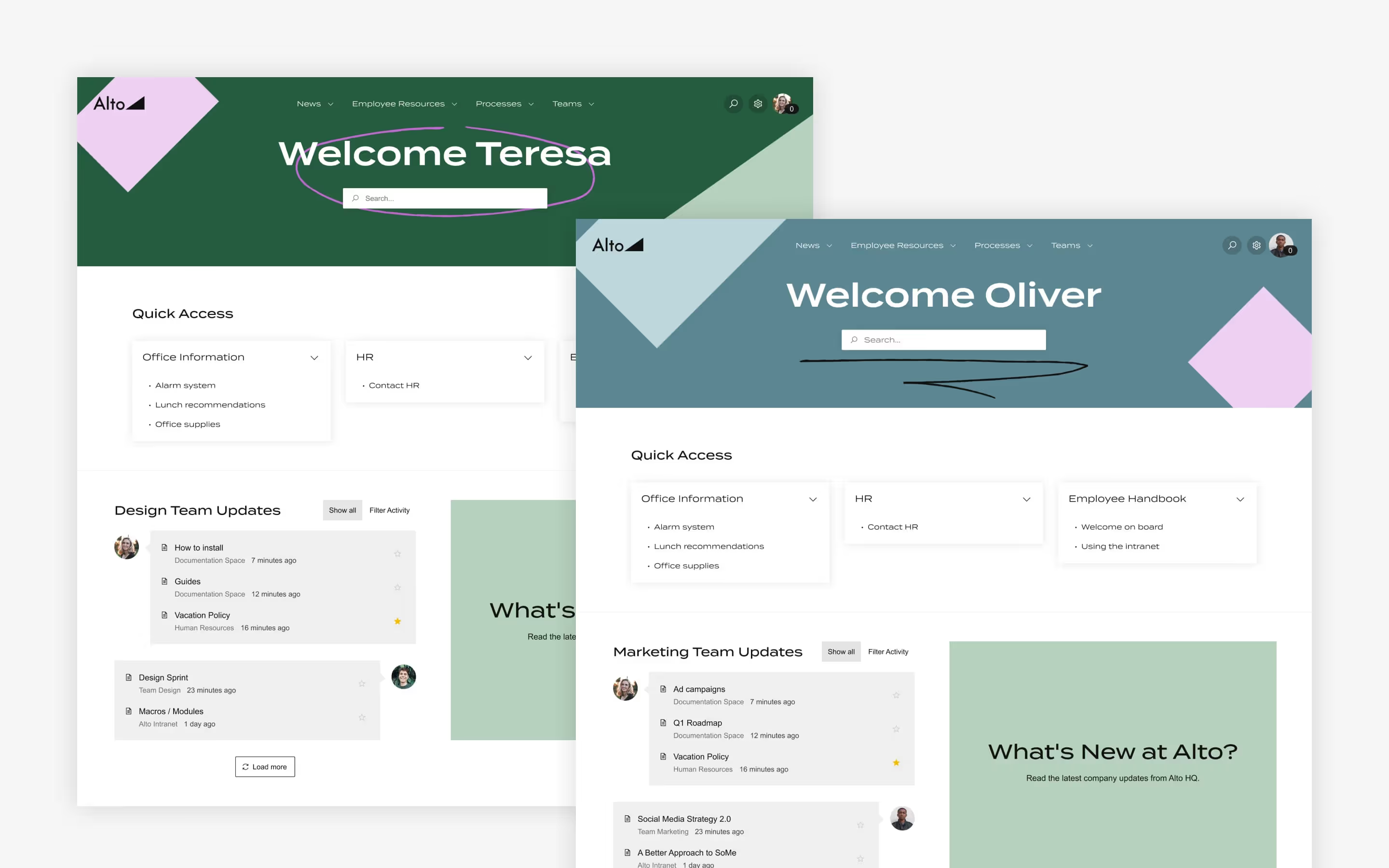7 traits the best intranets have in common

Standout intranets are designed with care to deliver lasting value to the entire user base, and they use customizations that boost engagement.
The unpleasant truth: Too many intranets don’t live up to their potential. Without a cohesive content strategy, an intuitive structure, an alluring design, and proper upkeep, an intranet can become cluttered and unwieldy, making it less likely your users, well, actually use it. So how do you build an intranet worthy of your organization? Start with a look at the hallmarks of great intranets and go from there. Here’s are seven traits the best have in common.
1. They're built using the right tools
When it comes to building an intranet, there is perhaps no more important decision than which tool to use to power it. Ask yourself these questions before taking the plunge:
- Does it integrate with your existing tech stack? In a perfect world, your intranet slots in nicely with the other tools employees use day to day, whether they’re project management systems, documentation systems, social messaging tools, or other systems.
- What does the platform offer you out of the box? If you’re starting from a blank slate, it also helps if your intranet comes with out-of-the-box features that don’t require costly or technical development.
- Is it user friendly? More than anything, you want your intranet to be user-friendly. End-users want to quickly navigate to the pages most relevant to them, while administrators should be able to edit any corner of the intranet and build out the content without extensive coding knowledge or having to navigate a cumbersome interface.
- Is it mobile friendly? Keep in mind that increasingly, employees are accessing workplace tools on smartphones and mobile-friendly software will likely bolster user adoption. We’d go as far as saying a mobile/responsive intranet is non-negotiable these days.
- Can you make it look the way you want it to? In a perfect world, your intranet fits into your wider brand aesthetic. That way, users instantly recognize it as a space that belongs to them as employees at your company.
Of course, you should also always aim for tools that are priced within your budget, come with ironclad security features, and offer accessible tech support in a pinch.
"In a perfect world, your intranet fits into your wider brand aesthetic. That way, users instantly recognize it as a space that belongs to them as employees at your company."
2. They boast a solid content strategy
Great intranets aren’t built in a day. You need a thoughtfully planned content strategy if you want a solution that appeals to every user. So assemble a team across departments to see what different employees want to see in it. Keep in mind that you’ll likely employ a mix of evergreen content, which includes things like employee handbooks, mission statements, and IT desks, and more dynamic information like news and job postings.
As you’re conceiving the site, ask yourself questions like:
- What type of content is a must-have?
- How will the content be structured?
- Who is the content for?
- Who will create the content?
Read our guide to developing a content strategy here.
3. They prioritize the user experience
The best intranet builders take time to anticipate user needs and expectations and build around them. Thoughtful design that matches your company’s branding, easy-to-find links that access relevant pages, and landing pages that make your content pop will all make for a welcoming environment that users find both enjoyable and practical.
Intranets should also encourage collaboration. Whether that means file-sharing, cross-team transparency, blogging, or commenting, getting employees to interact with one another is a surefire way to keep your intranet humming.
4. They have buy-in across the org
Your intranet is a cross-functional endeavor, which means you’ll want buy-in from key people across your user base. With that in mind, assemble a roundtable of representatives from across the org and get to the heart of questions like:
- Why will you visit the intranet?
- What kinds of problems will you be solving when you visit?
- What kinds of content will you be seeking out?
- What are your goals?
These answers will give you direction and insight into the various needs of different user groups.
"Your intranet is a cross-functional endeavor, which means you'll want buy-in from key people across your user base."
5. They have clear priorities
Separate your must-haves from nice-to-haves and prioritize the content accordingly. That means, for example, structuring the navigation menu so that top-level items showcase your users’ biggest needs. It also means making tough decisions about what should and shouldn’t make the cut to be included on the intranet. You want to avoid content overload — at the outset but also over time. Often, less is more. That’s what we learned at least during our own recent intranet overhaul.
6. They’re easy to manage and maintain
If your intranet hosts multiple pages and serves a growing user base, it runs the risk of getting disorganized. To avoid that, consider naming “gardeners,” or admins in charge of site maintenance, to delete, revise, and moderate content. Of course, this is easier to do when your “gardeners” have administrator rights, so it helps if your solution allows you to flexibly delegate editing permissions to the team members of your choosing. Aim to refresh your intranet with new graphics and landing pages every now and then, while reviewing your labeling strategy and archiving outdated content. Set a cadence for audits and stick to it. Once per quarter or twice per year might do.
7. They reflect your brand
Intranets shine when they reflect your company culture. That means they’re aligned with things like your brand’s aesthetic and tone of voice. Ideally, your intranet mirrors the look and feel of your external site and other brand assets. Look out for solutions with theming capabilities that let you apply your choice of colors, backgrounds, and the like.

Can you use Confluence as an intranet?
Confluence provides a great foundation for setting up an intranet that gives teams their own spaces for collaboration, technical documentation, project management, and any other content they’d like to showcase.
But if you want to add structure while improving the user experience, third-party apps available on the Atlassian Marketplace, like Refined Sites for Confluence, can improve your Confluence intranet’s look, feel, and functionality.
Customize your Confluence intranet with Refined Sites
If you use Confluence as the foundation of your intranet, you can use Refined Sites to turn it into a custom, website-like intranet that looks, feels, and works better thanks to:
- Website-style navigation and structure
- Layouts on landing pages and space homes that highlight important pages and information
- Navigation modules that help users find what they need fast
- Intelligent search that promotes common search items
These features, along with a built-in theme editor and page builder, help you prominently display content that matters most to your audience, so content is easily accessible and improves user satisfaction across your employee base.
Learn more about Refined Sites for Confluence.
Try Refined Sites for free for 30 days on the Atlassian marketplace.
Read more about



Try Refined free for 30 days

























